Where we’ve been, where we are and where we’re going
May 2022 Report
Introduction
Although space has captivated the minds of many Americans since the 1960s, it is only in the last two decades that real strides have been made to make space more accessible and cheaper. As these trends continue, new opportunities are expected to open in industries such as space tourism, asteroid mining, communications, and materials science. These new advances and developments will lead to amazing new businesses and opportunities as companies attempt to capture a portion of what is expected to be a $1 trillion market by 2030.
Many of these possibilities seem to be farfetched, but the space industry has already proven time and time again that things that were often seen as impossible, such as fully reusable rockets or completely commercial spaceflights, can quickly become achievable. As NASA and the US government have made strides to engage private industry both through contracts and public-private partnerships, new opportunities have presented themselves.
The next few decades will likely consist of an explosion of development in this space as more and more companies begin to take advantage as costs fall. This article seeks to bring to your knowledge investment opportunities in this space. This is achieved by giving more insight into rocket launching, satellites, space labs, space debris clean up, moon base construction, spaceports, and space elevators. Also, we have detailed a few key industries that we think are poised to benefit from this trend, and as well we’ve highlighted some investment opportunities for you.
But before diving into this, let’s take a look at a timeline of historic events in the space industry.
Short Timeline
1957 October 4 – The Soviet Union launched Sputnik, the first satellite
1958 January 31 – The United States launched its first satellite, Explorer 1
1960 August 19 – Soviet dogs Strelka and Belka, riding Sputnik, become the first living beings to survive a trip to space
1961 April 12 – Russian cosmonaut Yuri Gagarin is the first human in space
May 5 – Alan Shepard is the first American astronaut in space
1962 February 20 – John Glenn becomes the first American in Orbit
1965 March 18 – Cosmonaut Alexi Leonov becomes the first man to walk in space
June 3 – Ed White becomes the first American to walk in space
1966 February 3 – Luna 9 becomes the first Russian spacecraft to land on the moon
June 2 – The United States lands Surveyor 1 on the moon
1969 July 20 – Neil Armstrong and Buzz Aldrin become the first men on the moon
1971 July 30 – Moon rover was driven on the moon for the first time
1972 December 11 – Eugene Cernan and Harrison Schmitt are the last men to walk on the moon
1973 May 14 – Skylab becomes the first space station launched by the U.S.
1976 September – Viking 2 discovers water frost on Mars
1977 August and September – Voyagers 1 and 2 are launched
1981 April 12 – Columbia becomes the first Space Shuttle to be launched
1983 April 4 – Challenger, the second Space Shuttle, is launched
1984 August 30 – Discovery, the third Space Shuttle, is launched
1985 October 3 – Atlantis, the fourth Space Shuttle, is launched
1986 January 28 – The Challenger Space Shuttle explodes after liftoff
1990 August 24 – Hubble Space Telescope is deployed
1993 December – The Space Shuttle Endeavor made the first serving mission to the Hubble Telescope
1997 July 4 – The Mars Pathfinder lands on Mars
2004 January 14 – President Bush proposes a new program to send humans back to the moon
2010 October 10 – Virgin Galactic announces the first successful manned flight in suborbital orbit designed to take citizens to space
December 8 – SpaceX is the first non-government organization to launch a spacecraft into orbit and safely return it to Earth
2011 July 8 – The space shuttle Atlantis becomes the last spaceship to be launched
November 26 – The robot Curiosity is launched to explore Mars
2012 August 25 – Voyager 1 is the first man-made probe to reach interstellar space
2015 November 23 – First propulsive landing of a suborbital rocket
December 21 – First propulsive landing of an orbital rocket
2020 May 30 – First orbital human spaceflight launched by a private company, SpaceX
Launches
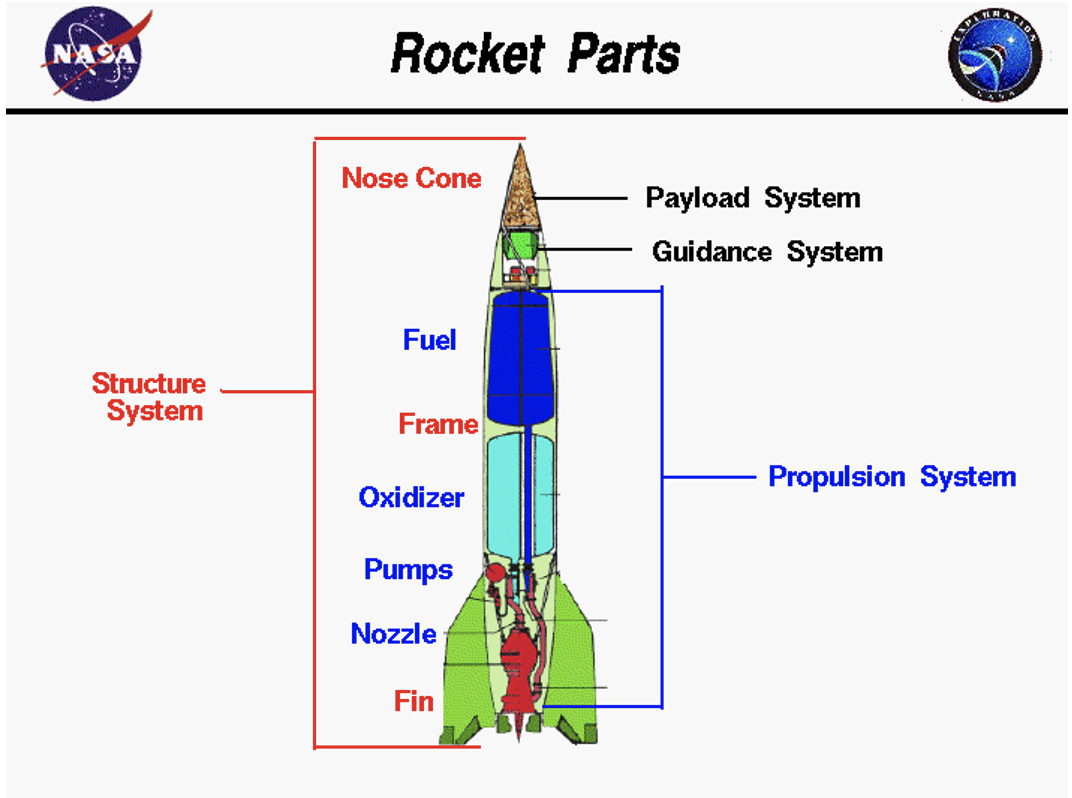
Rockets:
Although simple in concept, developing rockets for space travel required scientists and engineers to overcome a variety of challenges. Due to the decreased pressure in the atmosphere as the rocket approaches space, and the vacuum of space, special considerations had to be made to ensure the rocket was able to maintain itself in all these environments. One of the main issues was designing the rocket so it could function in a vacuum. This meant it couldn’t use a traditional internal combustion engine because such an engine required oxygen, which does not exist in the vacuum of space, to be present outside of the rocket. Also, factors like atmospheric pressure as well as mass and temperature had to be considered.
Given these constraints, most rockets consist of four main parts: the structural system, the payload system, the guidance system, and the propulsion system. The structural system consists of every part of the rocket which makes up the frame, the body, and the control fins. Its function is to transmit the loads from the forces generated and to provide low drag during the flight. The payload system is the most important part since it carries whatever is trying to be moved by the rocket. This can include satellites, supplies or even people. The propulsion system is made up of all the parts that go into moving the rocket. This includes the engine, fuel, and any other associated equipment. Lastly, the guidance system is a complex web of sensors, computers, radars, and communication equipment that work to ensure that the rocket is stable as it travels. These four parts work together to allow rockets to fly effectively.
Costs over time:
For space to become more accessible, costs to launch cargo must fall. Luckily, this trend has already been playing out with costs for transporting cargo into low Earth orbit falling from $85,216 per kg in the 1981 Space Shuttle to just $951 per kg in SpaceX’s Falcon Heavy. These falling costs are only the beginning as NASA expects to be able to get costs to as low as tens of dollars per kg by 2040 with longer-term estimates identifying just a few dollars of costs per kg. As prices fall, the number of things that can be profitably done in space will grow. In addition to existing technologies such as satellites and space stations, new enterprises, such as mining or tourism, will also become cost-competitive.
Orbital vs. Suborbital Flight:
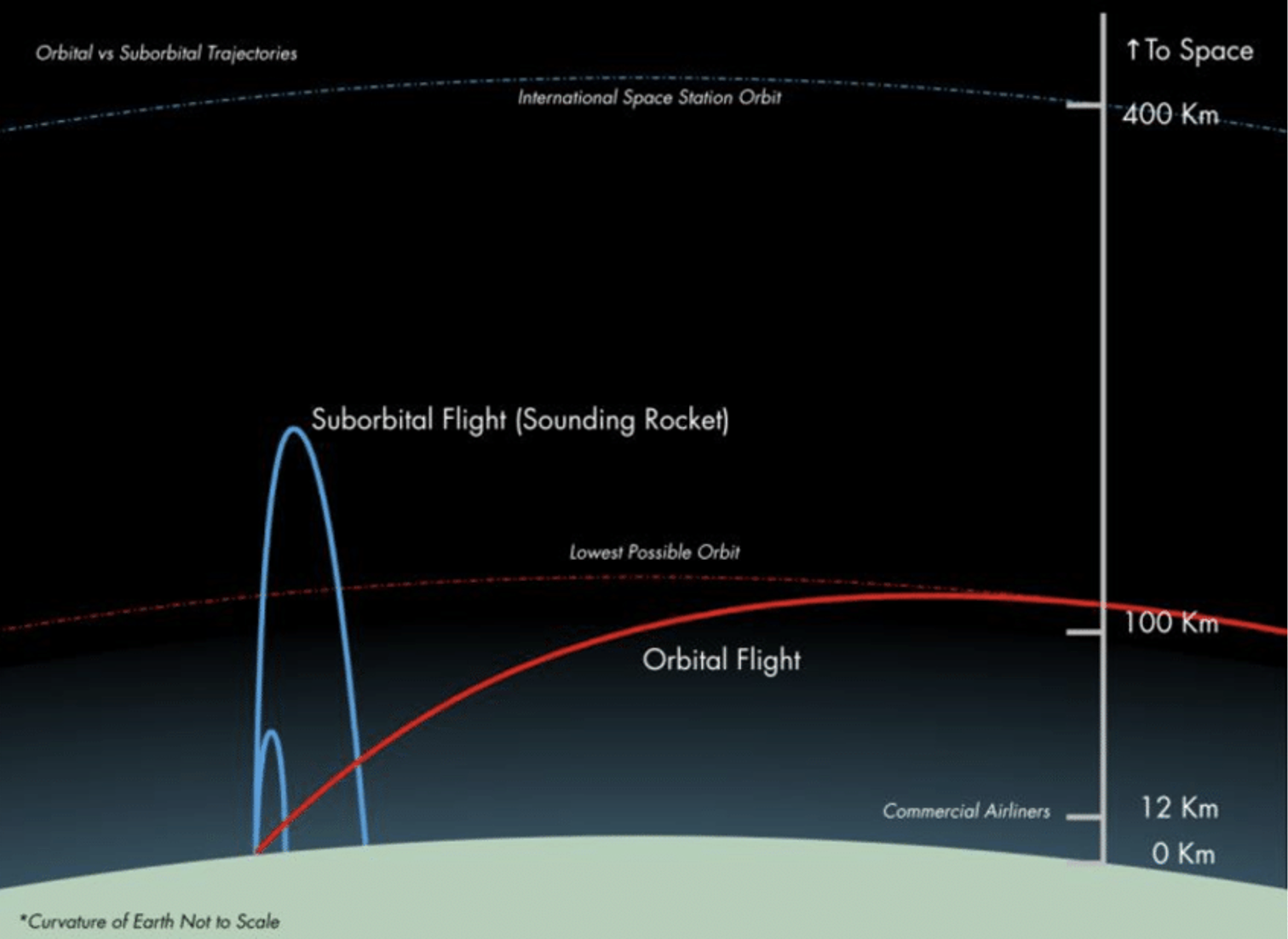
Although similar in name, Orbital and Suborbital are distinct due to one main factor: speed. In an Orbital flight, the rocket must go fast enough to not get pulled back to the Earth’s surface. This typically means about 17,400 mph. When moving this fast, gravity still pulls the rocket towards the Earth, but it moves so fast that it essentially falls past the Earth. As it gets pulled but repeatedly misses the Earth itself, it can orbit. This is different from Suborbital flights which are more like a traditional arc where the rocket is eventually pulled back to the surface. These do not require such high speeds to accomplish. The required speed is closer to about 3,700 mph. Although most permanent activities such as satellites or stations must occur in orbital flight, some temporary ones such as space tourism can be sustained using suborbital flight.
Satellites
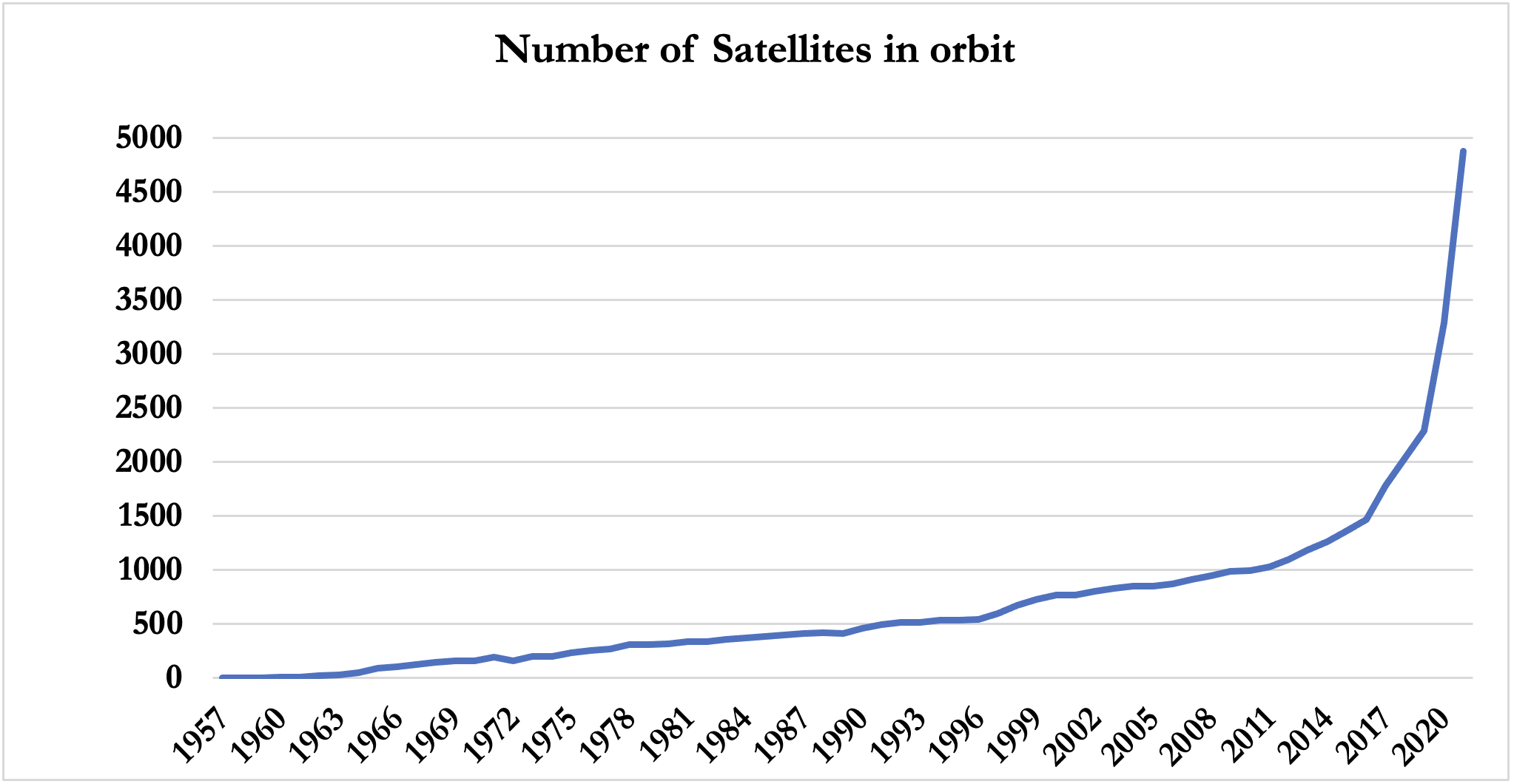
From telecommunication to weather forecasting to television, satellites play an important role in our everyday life, but as space becomes more accessible to an increasing number of private organizations as well as governments, the number of satellites will only grow. It’s important to understand what a satellite is, and what types of satellites there are.
In short, a satellite is any object that orbits around the earth. As a reminder, an object in orbit is one that basically rotates around the earth without ever actually falling to the earth. There are two types of satellites, natural satellites and artificial satellites. The more common use of the term refers to artificial satellites. Natural satellites include asteroids, space dust, and other natural objects. While artificial satellites are the ones put into space by humans to serve a specific purpose. This is often related to a variety of activities such as data collection and communications. Due to falling costs, the number of satellites in orbit have increased exponentially, with almost 5,000 currently in orbit.
Types
Satellites are broadly categorized by the distance away from earth’s surface at which they orbit. The main categories include Low Earth Orbit (LEO), Medium Earth Orbit (MEO) and Geostationary Orbit (GEO). Each of these categories offers certain benefits and is used for a variety of reasons.
Low Earth Orbit (LEO)
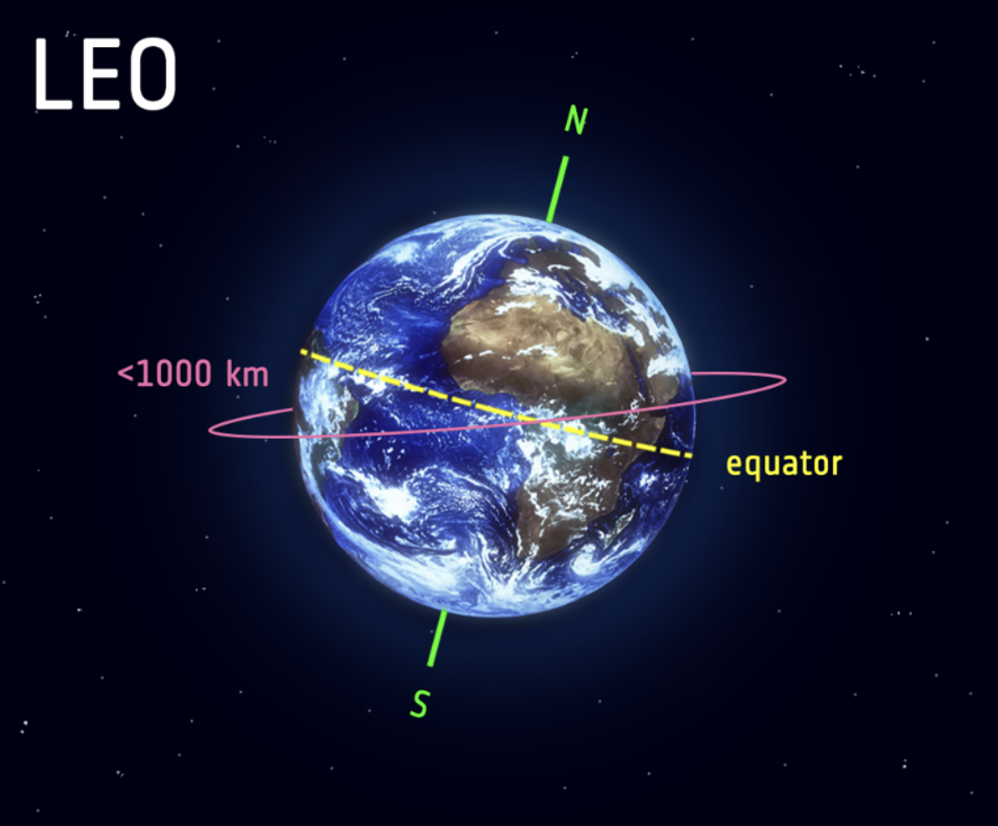
This typically refers to satellites that orbit at 2000km or less. The vast majority of satellites orbit in this zone such as the International Space Station. To maintain orbit at this level, satellites must move at about 8km per second. These objects can also follow any orbital path and are not limited to just the equator like other satellites. Due to its close distance, it is mostly used for satellite imaging. It takes about 90 minutes for a satellite in LEO to orbit the Earth. Although individual satellites at this level are often not used for telecommunication. Since they move very fast, it would require significant effort to track them from ground stations. To overcome this issue, operators often use constellations. Constellations are a series of many satellites that work and move together in a long chain. This allows for the creation of a net around the Earth. These webs of satellites can take advantage of the high data transmittance speeds of low orbit but still be usable from the ground even when moving at high speeds. The most well-known constellation is StarLink.
Medium Earth Orbit (MEO)
Satellites in MEO fall between 2,000km above the surface and 35,786km. These satellites are often used for navigation, communication, and some data collection. It is common to have satellites at about 20,200km for GPS systems. Although MEO consists of the largest range, it is the least used of the three types, making up only about 5% of satellites as of 2010.
Geostationary Earth Orbit (GEO)
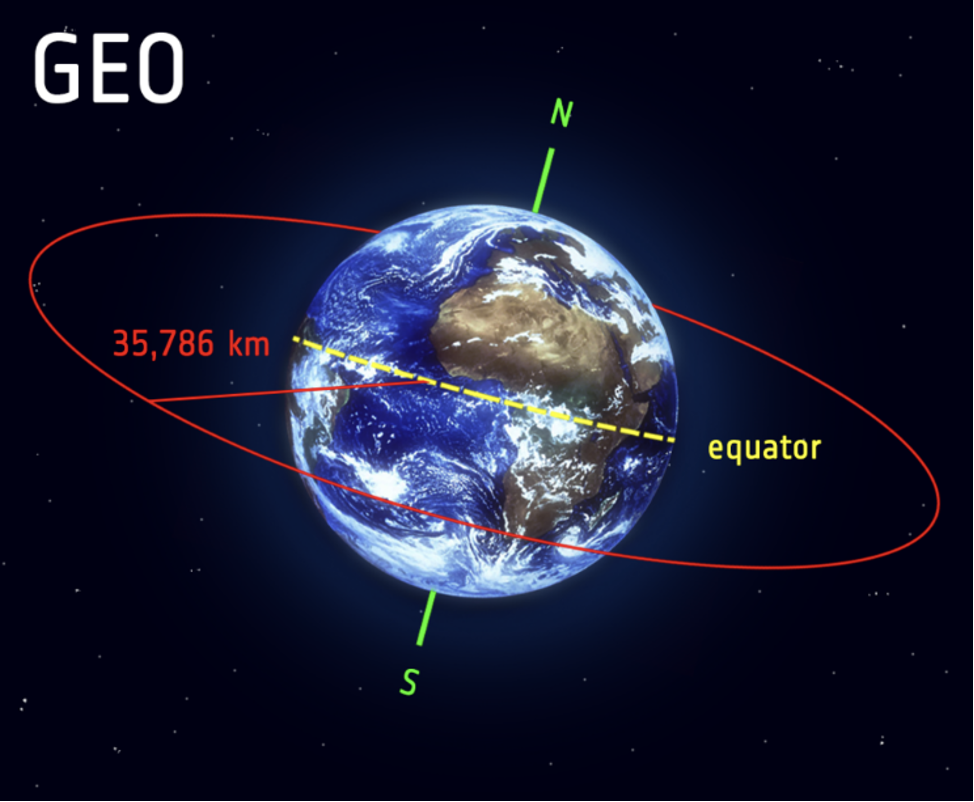
GEO is the furthest type at about 35,786km above the surface of the Earth. This is unique compared to the other two because it allows for satellites placed here to match the speed of Earth’s rotation. This means that they can essentially cover one spot on Earth over time, which is particularly useful for telecommunications. This allows for significant weather data collection as well. Additionally, due to the large distance, it only takes a few satellites to cover the entire surface of the earth. Although this allows for more efficiency, due to the long distance, latency is massively increased.

Space Labs

Since the beginning of space travel, there has been considerable interest in developing long-standing space labs. These labs would allow humans to conduct experiments in a “weightless” environment. Doing this research would not only help to better understand how the human body works in space, but it can even help to develop new materials back on Earth. Common fields of study in space include material science, fluid physics and life science, Earth observation and technology. There have been a few space labs over the years with the largest and most well-known being the International Space Station. In the past, the Soviet Union created the station Mir and NASA had Skylab, but these are currently decommissioned. China, India and Russia have all expressed interest in building new stations in the coming decades.
International Space Station (ISS)
Beginning construction in 1998, the International Space Station (ISS) is a collaboration of more than 15 countries around the world. The lab consists of several connected modules from a variety of countries including the U.S., Russia and Japan. These modules were sent into space for about ten years and the station has had continuous human presence since 2001. At about the size of a football field, it is the largest space lab in history. It has been used for a variety of scientific purposes and has been continuously occupied for the last 20 years. Although it is still operational, funding is expected to dry up by the end of the decade making room for new alternatives. NASA has expressed interest in allowing the ISS to transition from a government operation to one conducted by private enterprise as NASA refocuses on the Moon.
Future Space Labs
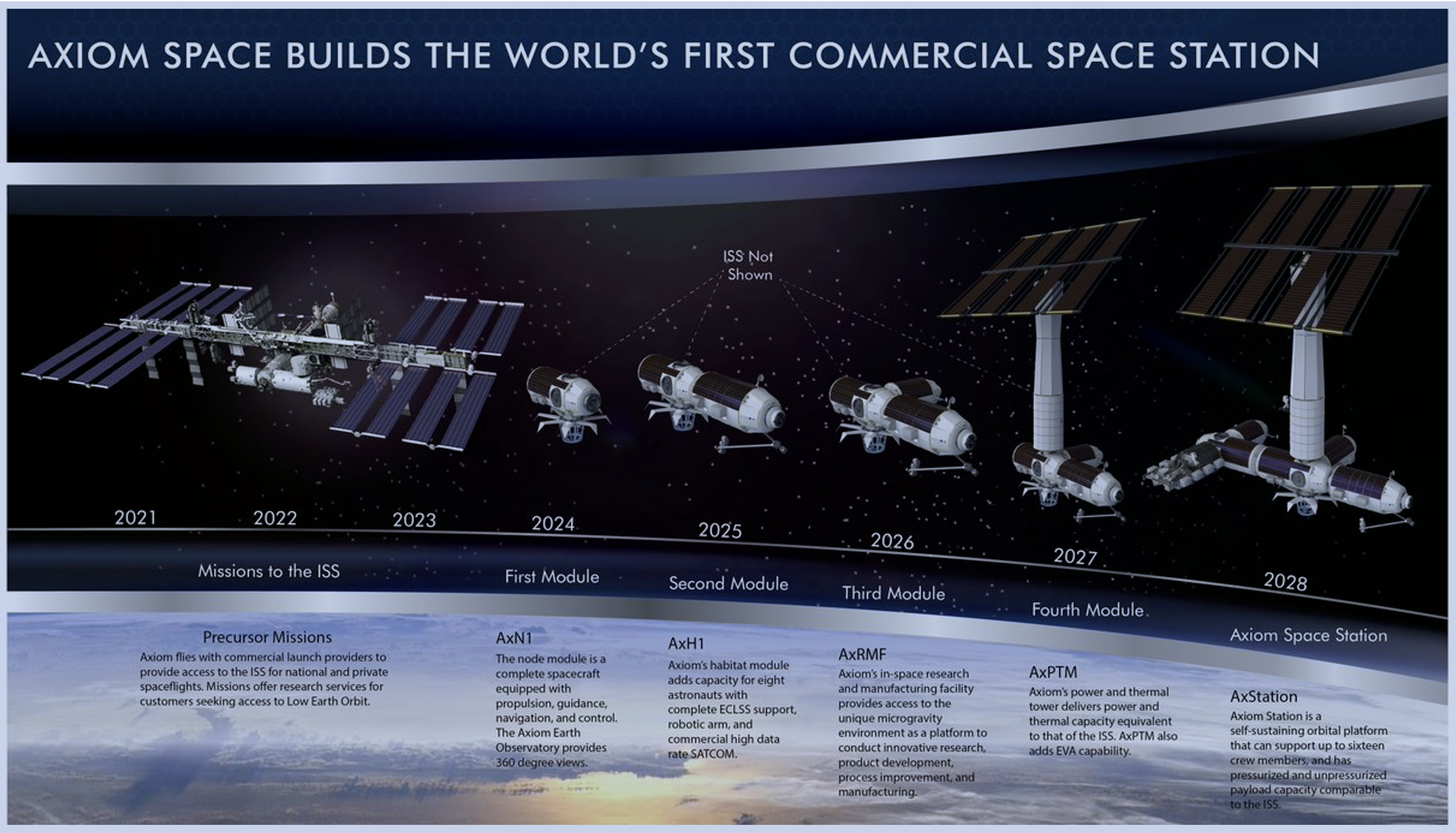
It appears the age of international cooperation for space stations is coming to an end as China plans to create its own station along with India by the end of the decade. They will, however, face competition from private actors who seek to develop their own stations. These stations would be used by a variety of organizations including governments and tourist groups. Such efforts could increase the number of labs operating in LEO from just the ISS to as many as five or six labs by the end of the decade. There will likely be a range of stations dedicated to research, tourism, and manufacturing.
Space Debris Cleanup
Currently, there are over 120 million objects larger than one millimeter orbiting the Earth. Although such small objects may not seem like something to worry about, they can quickly become problematic due to their speed. They move at about 15,700 mph, and since there is nothing to slow them down in space, they are at risk of damaging equipment. For example, back in 2016, a speck of paint impacted a window on the ISS and cracked it. With an increasing number of satellites launched every year, this problem is expected to accelerate in the coming decades. Additionally, when these collisions do happen, it creates significantly more junk that can cause more accidents, leading to a chain reaction effect. This creates a positive feedback loop that could add so much debris that it would become nearly impossible to operate in LEO, known as the Kessler effect.
What to do about it?
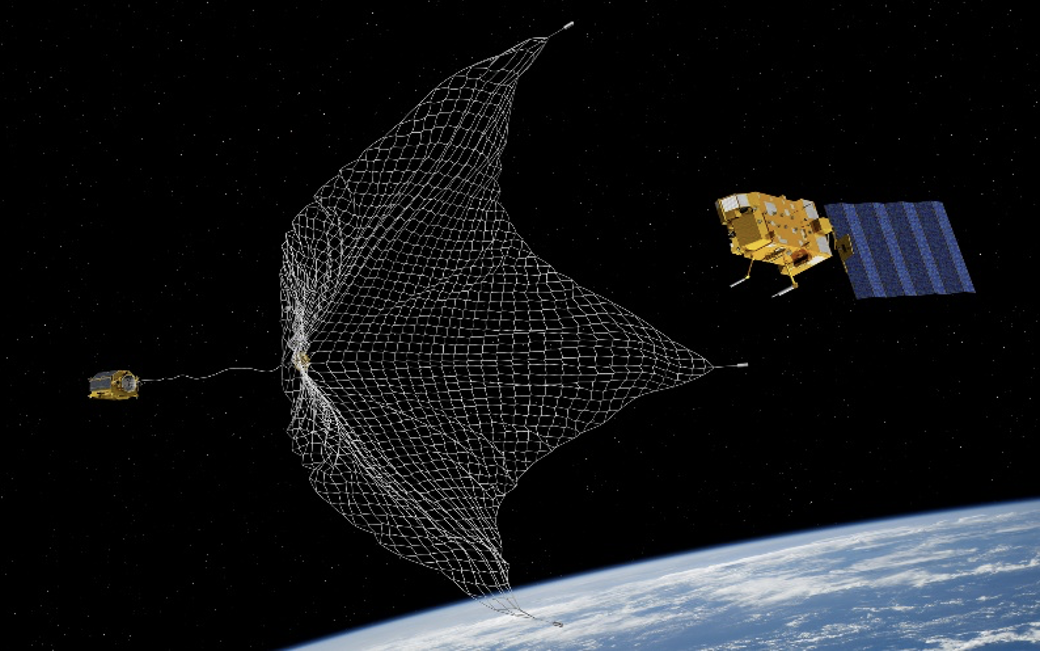
There are a variety of companies looking to solve this problem, but all of them are concerned with reducing the chances of an impact. Mainly, they want to prevent large objects from colliding with either active satellites that could be damaged or other large objects as these collisions would create many smaller objects. To solve this problem, there are a few approaches. The first is called claw capture. Originally pioneered by a company called Clearspace Today, claw capture allows for a satellite to grab onto an existing piece of large space debris and attach it to the satellite. It can then pilot itself into the atmosphere to remove that piece from the atmosphere. This however poses several problems including maneuvering challenges since all the objects are moving quite quickly. Another method also uses a similar technology but focuses on using magnets instead of a physical arm to grasp the debris. This method is more likely to succeed but is limited in that the object would ideally need to have a magnetic port that the removal satellite could attach to. Without this port, it remains challenging to effectively grasp onto the debris. The Japanese company, Astroscale, is currently developing this technology.
The RemoveDEBRIS project was launched for this purpose. The project uses a net and harpoon system to capture and direct debris back into the atmosphere and is being developed by several collaborating companies. Although these are all promising, they are chiefly concerned with large pieces of debris. Smaller pieces are more difficult to address which is why some companies are developing laser systems on Earth that can track these smaller objects. By targeting these objects in a specific way, they can shift their orbit to prevent collisions or slow them down, so they burn up in the upper atmosphere. There are a few different solutions to the space debris problem, but it will require more investment and development to reach scale.
Moon Base Construction
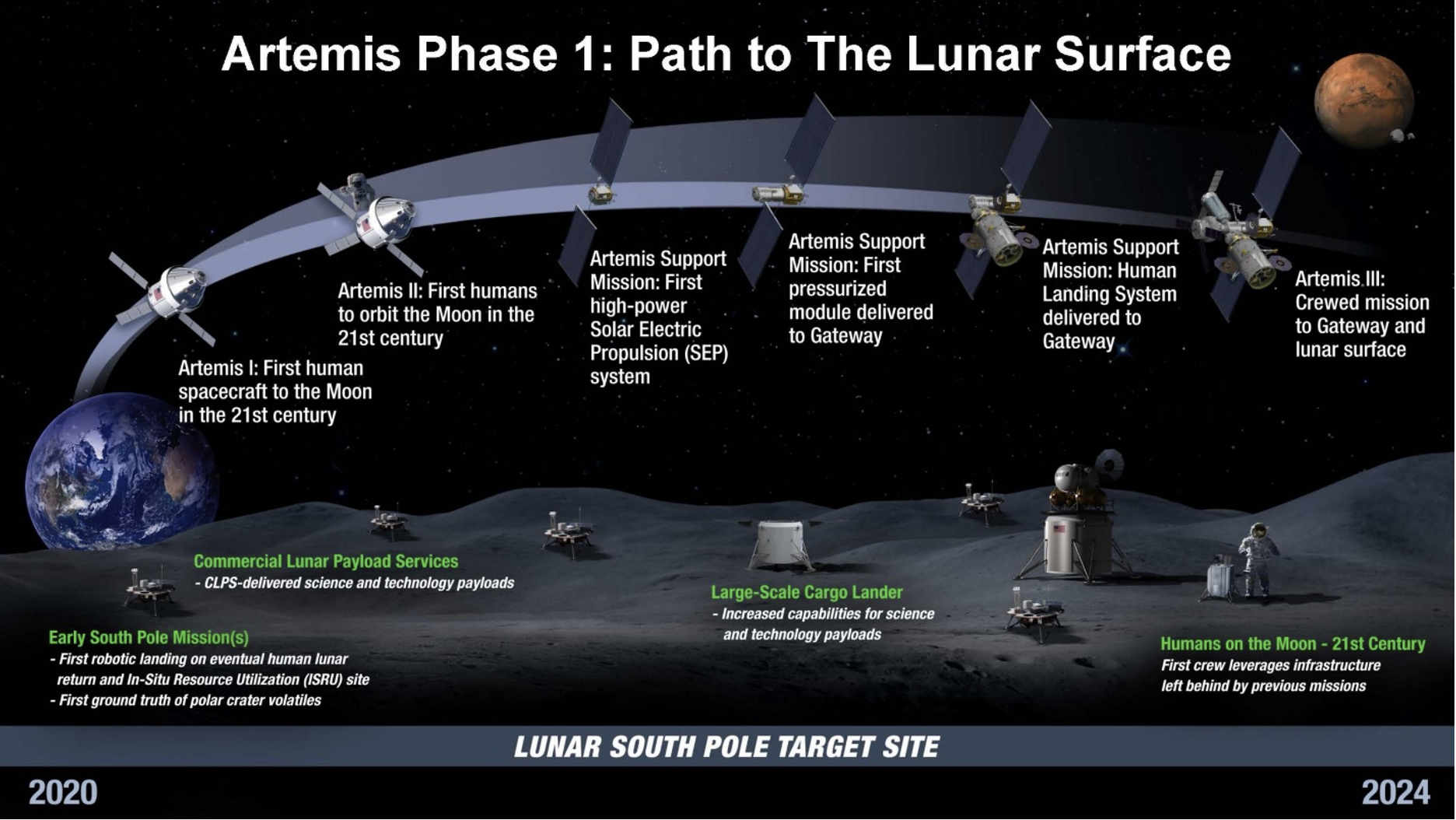
It has been over 50 years since humans have last walked on the moon through the Apollo program. This, however, is likely to change due to NASA’s Artemis program. The Artemis program consists of a series of phases working towards the development of long-term human presence on the moon. This will be done through a more permanent orbiting lunar station called the Lunar Gateway, similar in concept to the ISS. This Gateway combined with a Human Landing System (HLS) will allow astronauts to travel between the surface and the Gateway. Additionally, there are plans to develop a more permanent base on the surface that could sustain astronauts for months at a time. This base would consist of three main modules: the Foundational Surface Habitat, the Habitable Mobility Platform, and the Lunar Terrain Vehicle. Although much is unknown about this base, it would likely serve as a testing ground for a potential base on Mars.
Artemis I:
Expected to launch later this year, Artemis I will serve as the initial test flight for the SLS (Space Launch System) and Orion system. This uncrewed flight will take about three weeks and will spend six days in orbit around the moon. Additionally, it will test conditions in orbit concerning radiation and its effect on living tissue as well as conduct a variety of other tests.
Artemis II:
As the first crewed flight in the program, Artemis II serves as the main launching point for realizing the goal of returning humans to the Moon. This flight will consist of a four-person crew that will conduct tests in High Earth Orbit before being boosted into a free-return trajectory around the Moon and returning to Earth. Artemis II is expected to launch in 2024.
Artemis III:
As the first crewed landing in over 50 years, Artemis III represents a significant step forward in establishing a long-term presence on the Moon. Expected to launch in 2025, it will require a support mission to place an HLS in orbit around the moon. The SLS will then dock with this HLS to allow the astronauts to land onto the surface. They will spend just under a week on the surface as they conduct tests and explore. They will then return to orbit the HLS and then return to Earth.
Artemis IV:
This mission will require the development of the above-mentioned Lunar Gateway and will begin to allow for a long-term orbital presence on the Moon. This crew, scheduled to launch in 2026, will help to fully construct the Gateway.
Additional Missions:
NASA anticipates that it will develop several additional launches through the early 2030s as it begins to test long-distance deep space launches in anticipation of a human mission to Mars. Additionally, a more permanent base will be developed as astronauts further explore the lunar surface. Lastly, China and Russia have also shown interest in developing their own lunar base in competition with the US and its allies, but they have not made significant plans yet.
Spaceports

Currently, there are 13 FAA licensed Spaceports sprinkled throughout the United States. This designation comes in two forms: horizontal and vertical. Vertical launches consist of a traditional rocket leaving a launchpad and horizontal is when a plane will fly a rocket up and then release it once it has reached a certain altitude. The process of getting a site licensed is often long as it requires many different stakeholders to agree on issues of environmental impact as well as safety concerns. The busiest spaceports are the Cape Canaveral port and the Vandenberg Air Force Base in California. Since 1957, they have been responsible for 935 and 625 launches, respectively. These two bases still account for most launches. However, as you can see below, the number of spaceports has increased and will likely begin to take market share away from these traditional ports.
Noise Problem
The biggest issue that often goes overlooked with increased space travel is that of sound around launch sites. With decibels reaching as high as 220, significantly above the pain threshold of 120, the location of these ports must take this noise pollution into consideration. In the future, it is likely that many of the spaceports will be attached to traditional airports, simply acting as another terminal that can be used. This however represents a challenge since a commercial airplane will peak at 140 decibels versus 220 decibels for a rocket. Also, because the decibel scale is logarithmic, a rocket produces a sound that is orders of magnitude more forceful. Currently, the most effective solution is to use hundreds of thousands of pounds of water sprayed into the area around the rocket as it takes off. This meets the sound waves and converts them into heat which dampens the noise.
To solve this problem, some experts have recommended constructing spaceports over water, like how an oil rig rests on the sea. They could even be put in the sky, on large balloons to avoid disturbing the people near the location, but still being convenient to travel to. Either way, there will likely have to be significant developments in noise dampening if the number of launches is going to increase significantly as this excess noise represents an externality associated with building spaceports.
Far into the future:

Although they are still new, it is reasonable to believe that just as a sophisticated seaport and airport system developed as those technologies became more widespread and cheaper, a complex spaceport system will also develop. As the number of launches increases exponentially, there will have to be significant investment by both governments and private enterprises to expand their current capabilities. This, however, remains limited as the FAA is not currently granting money for spaceport expansions, meaning that much of the funding has come from states such as the famous Spaceport America in New Mexico which cost the state over $200 million and is currently being leased by Virgin Galactic. If such a global and perhaps even interplanetary system of spaceports is to be developed, it will require more investment into this infrastructure.
Lastly, one of the biggest challenges of these ports exists in their size. As rockets get bigger, they become more and more material intensive. This is due to the square-cube law which states that as an object gets larger, its surface area will increase in proportion to the square of its length while the volume will increase in proportion to the cube of its length. This makes it naturally difficult to build large structures such as a spaceport that could handle such large rockets, particularly if those ports are constructed in space.
Space elevator
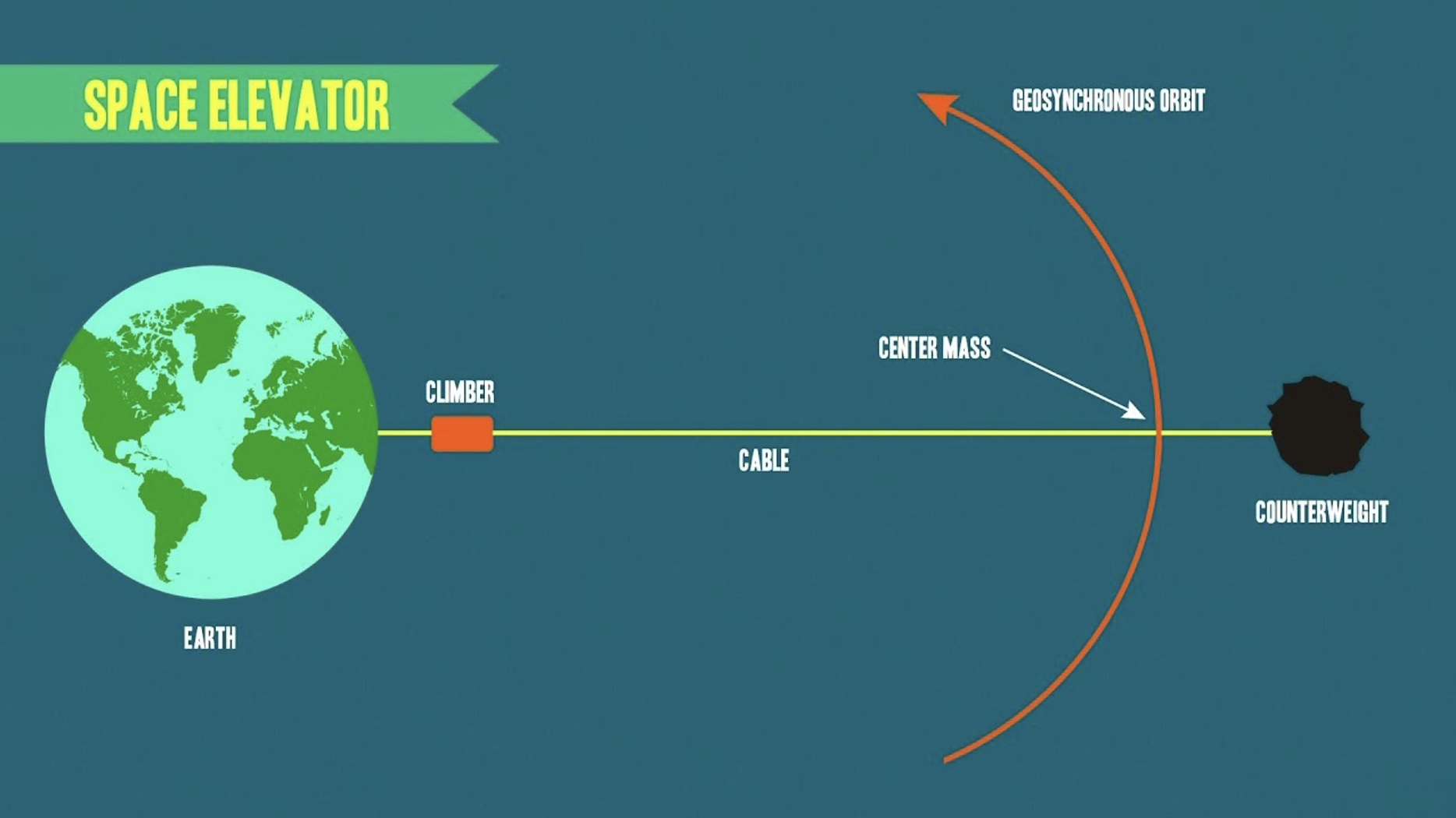
In short, a space elevator is exactly what it sounds like, it’s a device that transports a platform of some kind up into orbit in a quick and efficient manner. The elevator would be attached to the earth through a cable that connects to the ground. It would then connect a long counterweight on the end of the cable that is placed into geostationary orbit. This would be about 35,000 km above the surface of the Earth. Such a great height would be required for the same reason to keep the space elevator stationary. As mentioned above, a geostationary orbit is when the satellite rotates at the same speed as the earth spins which allows that object to stay over the same singular point on earth. This is necessary for the Space Elevator to be used effectively. If it was placed too close or too far it would begin to wrap around the earth like a tetherball wraps around its post until the tether snapped, flinging the counterweight into space.
Why build it?
The immediate benefits of a space elevator would be vast. Most notably, it would drop the cost of transporting materials into space from about $1,000 per kg to perhaps a few dollars. This opens tons of opportunities to build more advanced space stations within orbit. Additionally, just as lower rocket costs have led to new opportunities surrounding tourism and satellite networks, reduced costs will always lead to new opportunities that can’t be imagined.
What’s stopping us?

Predominantly, there are two main reasons we have not constructed a space elevator: materials and politics. On the first point, the materials would have to be incredibly strong to handle the forces placed on its base as it has all those materials weighing down on it, and the materials at the top would have to be strong enough to prevent the counterweight from tearing the tether. As of now, the most promising material is carbon nanotubes. These tubes are made of a single sheet of carbon atoms, known as graphene, but formed into a tunnel shape.
These bonds are incredibly strong and allow for a lightweight but powerful material to be made. For reference, the tensile strength of carbon nanotubes is about 100 times that of steel of the same diameter. The difficulty comes with trying to build the long chains required to build a long enough tether for a space elevator. Currently, the largest single chain is about 50cm with the more complicated forest being about 15cm. This is however a significant improvement over previous attempts that were limited to less than 5cm. These chains would need to be kilometers long to build the tether required for the elevator and costs would have to come down. Over the coming decade, as the manufacturing process for carbon nanotubes is industrialized and costs fall, it will be achievable to develop a space elevator.
The other limitation is associated with politics. Who would own the elevator and who would have access to it? Any single country would likely face fierce international opposition as the ability to bring materials cheaply and quickly such as weapons into space represents a threat to all other nations. It would likely have to be a significant international effort, like the ISS. This however still presents location and other challenges. This is especially true as tensions rise amongst western countries and other powers including Russia and China. Any attempt to build an elevator would have to be handled extremely carefully.
Investment Opportunities
SPDR S&P Kensho Final Frontiers ETF (ROKT)
Tracks the Kensho Final Frontiers Index which is composed of companies whose products and services are driving the innovation behind the exploration of deep space and the deep sea. It has an expense ratio of 0.45%. It currently has about $20 million assets under management.
Top 5 Holdings
1. Aerojet Rocketdyne Holdings (AJRD) – 4.17%
2. Northrop Grumman Corporation (NOC) – 4.06%
3. Lockheed Martin Corporation (LMT) – 3.98%
4. Maxar Technologies Inc. (MAXR) – 3.90%
5. Honeywell International Inc. (HON) – 3.89%
The Procure Space ETF (UFO)
Tracks the S-Network Space Index which seeks to track the entirety of the Space Industry. It has an expense ratio of 0.75% and about $93 million in assets under management.
Top 5 Holdings
1. Virgin Galactic Holdings Inc (SPCE) – 5.9%
2. Maxar Technologies Inc (MAXR) – 5.18%
3. SES SA (SESG) – 5.17%
4. Trimble Inc (TRMB) – 4.19%
5. Eutelsat Communications SA (ETL) – 4.88%
Ark Space Exploration and Innovation ETF (ARKX)
Consists of companies that operate in the space exploration industry including orbitals, suborbital and enabling technology companies. It has an expense ratio of 0.75% and about $468 million in assets under management.
Top 5 Holdings
1. Trimble Inc (TRMB) – 10.2%
2. The 3D Printing ETF (PRNT) – 7.7%
3. Kratos Defense & Security (KTOS) – 6.4%
4. Iridium Communications Inc (IRDM) – 6.0%
5. L3Harris Technologies Inc (LKX) – 5.2%
iShares U.S Aerospace & Defense ETF (ITA)
Consists of companies that operate in the Aerospace & Defense industry, many of which also operate in the Space industry. It has an expense ratio of 0.42% and about $3.64 billion in assets under management
Top 5 Holdings
1. Raytheon Technologies Corp (RTX) – 21.33%
2. Lockheed Martin Corporation (LMT) – 15.43%
3. Boeing (BA) – 7.65%
4. Textron Inc (TXT) – 4.68%
5. Transdigm Group Inc (TDG) – 4.53%
SPDR S&P Aerospace & Defense ETF (XAR)
Consists of companies that operate in the Aerospace & Defense industry, many of which also operate in the Space industry. It has an expense ratio of 0.35% and about $1.78 billion in assets under management
Top 5 Holdings
1. Mercury Systems Inc (MRCY) – 4.64%
2. Axon Enterprise Inc (AXON) – 4.44%
3. Spirit AeroSystems Holdings Inc. (SPR) – 4.25%
4. Transdigm Group Inc (TDG) – 4.20%
5. Northrop Grumman Corporation (NOC) – 4.17%
Conclusion
Space exploration represents a unique investment opportunity as costs fall and many ventures become possible. We will likely see significant changes to the industry in the coming decades as these new enterprises emerge. These changes will be galvanized by public-private partnerships as NASA and other agencies seek to leverage their private industries to get ahead of their international competitors. Much of the international cooperation in space remains intact, but could become tumultuous should relationships on Earth, between the US, China and Russia become completely adversarial. This sector has tremendous upside and will bear watching over the next few decades.


